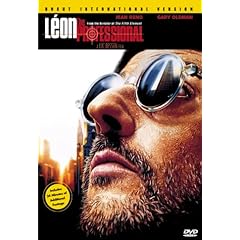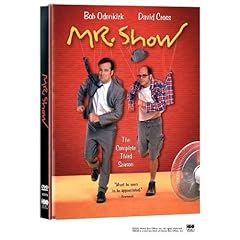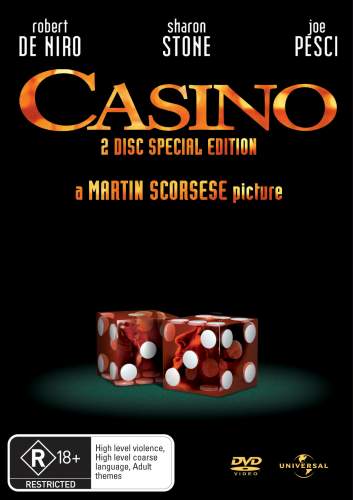The French Connection (film)
From Wikipedia, the free encyclopedia
Jump to: navigation, search
For other uses, see The French Connection.
The French Connection
Directed by William Friedkin
Produced by Philip D'Antoni
Written by Robin Moore (Novel)
Ernest Tidyman (Screenplay)
Starring Gene Hackman
Fernando Rey
Roy Scheider
Tony Lo Bianco
Music by Don Ellis
Distributed by 20th Century Fox
Running time 104 min
Language English
Budget $1,800,000 (est.)
IMDb profile
The French Connection is a 1971 Hollywood film directed by William Friedkin. The film was adapted and fictionalized by Ernest Tidyman from the non-fiction book by Robin Moore. It tells the story of two New York City policemen who are trying to intercept a heroin shipment coming in from France. It is based on the actual, infamous "French Connection" trafficking scheme. It stars Gene Hackman (as porkpie hat-wearing New York City police detective Jimmy "Popeye" Doyle), Roy Scheider (as his partner Cloudy), and Fernando Rey. It also features Eddie Egan and Sonny "Cloudy" Grosso, the real-life police detectives on whom Hackman's and Scheider's characters were based.
It was the first R-rated movie to win the Academy Award for Best Picture since the introduction of the MPAA film rating system. It also won Academy Awards for Best Actor in a Leading Role (Gene Hackman), Best Director, Best Film Editing, and Best Writing, Screenplay Based on Material from Another Medium (Ernest Tidyman). It was nominated for Best Actor in a Supporting Role (Roy Scheider), Best Cinematography, and Best Sound. Tidyman also received a Golden Globe Award, a Writers Guild of America Award, and an Edgar Award for his screenplay.
In 2005 the film was added to the list of films preserved in the United States National Film Registry.
Contents
[hide]
* 1 Casting challenges
* 2 Plot
* 3 Additional details
* 4 Cast
* 5 Related projects
* 6 Trivia
* 7 References and footnotes
* 8 External links
[edit] Casting challenges
Though the cast ultimately proved to be one of the film's greatest strengths, Friedkin had problems with casting choices from the start. He was strongly opposed to the choice of Hackman for the lead, and actually first considered Jackie Gleason and a New York columnist, Jimmy Breslin, who had never acted before.[1] However, Gleason, at that time, was considered box-office poison by the studio after Gigot had flopped, and Breslin refused to get behind the wheel of a car, which was required of Popeye's character for an integral car chase scene. Steve McQueen was also considered, but he did not want to do another police film.
The casting of Rey as the main French heroin smuggler, Alain Charnier (irreverently referred to throughout the film as "Frog One"), resulted from mistaken identity. Friedkin had asked his casting director to get a Spanish actor he had seen in the French film, Belle de Jour, who was actually Francisco Rabal, but Friedkin did not know his name. Rey was instead contacted but did not speak a word of French. However, after Rabal was finally reached, they discovered he spoke neither French nor English, and Rey was kept in the film.[2]
[edit] Plot
Spoiler warning: Plot and/or ending details follow.
The film revolves around the smuggling of narcotics between Marseilles, France and New York City. The film opens in Marseilles with a policeman staking out Alain Charnier, a French criminal who ostensibly works as a former stevedore-turned-shipping executive but is in fact involved in smuggling heroin from France to the United States (at one point, Charnier remarks that he hasn't done an honest day's work "since [he] stepped off the crane"). The French policeman is eventually assassinated by Charnier's henchman, Pierre Nicoli.
"Popeye" Doyle and "Cloudy" Russo
"Popeye" Doyle and "Cloudy" Russo
In New York City, detectives "Popeye" Doyle and "Cloudy" Russo are also performing an undercover stakeout, with Doyle dressed as Santa Claus and Russo pretending to be a hot dog stand operator. Eventually the suspect they are waiting for makes a break for it, and the detectives pursue him on foot. After catching up with their suspect (and delivering a severe beating after the suspect cuts Russo on the arm with a knife), the detectives aggressively interrogate the man and eventually force him to reveal where his "connection" is based (during this scene, a long-running joke is established, as Doyle bewilders the suspect by demanding to know if he "picks [his] feet in Poughkeepsie").
After Russo's arm injury is treated, Doyle convinces him to go out for a drink. At the nightclub they go to, Doyle becomes interested in two people: Sal Boca and his beautiful young wife, Angie. Doyle persuades his partner to come along as they tail the couple; several scenes are shown establishing the fact that although the Bocas run a modest newsstand/diner, their extravagant lifestyle (which includes nearly nightly trips to several nightclubs, as well as driving several different new cars) indicates they may be involved in some sort of criminal activity. Eventually there is a link established between the Bocas and a well-to-do person named Joel Weinstock, who is rumored to have extensive connections in the narcotics underworld. After rousting an all-black nightclub which involves Doyle questioning (and then beating up) his informant--about an apparent shortage of hard drugs on the street; Doyle is told that there is word a major shipment of heroin is on its way. The detectives convince their supervisor, Simonson, to pursue wiretapping the Bocas' phones and use several ruses (including Russo playfully flirting with Angie while her husband is out of earshot) to try to obtain more information on their subjects.
The film then centers on three main points: the criminals' efforts to smuggle drugs into the U.S. (which is made easier when Charnier dupes his friend Henri Devereaux into importing an automobile into the U.S.; unbeknownst to Deveraux, the drugs are carefully concealed within the vehicle) and the eventual sale of the drugs to Weinstock and Sal Boca; the efforts of Doyle and Russo to shadow Boca and Charnier; and the conflicts the two detectives have with both Simonson (their superior) and a federal agent named Mulderig. Both Doyle and Mulderig openly dislike each other; Russo and Doyle feel that they can handle the bust without the government's help; and Mulderig never hesitates to criticize Doyle on items ranging from trivialities like Doyle's appearance ("You look like shit") to an unspecified incident in the past, where Mulderig caustically states to Doyle, "the last time [you] were dead certain, we had dead cops" (the two nearly come to blows after this statement is made).
Charnier soon "makes" Doyle and decides he has to be eliminated. Charnier's henchman Nicoli (the one who assassinated the French detective) offers to do the job and tries to kill Doyle using a sniper rifle. However, he botches the job and a cat-and-mouse pursuit begins, which eventually leads up to the car chase scene described below. The chase ends when the elevated train Nicoli has hijacked crashes into another train; when Doyle catches up with Nicoli, he ruthlessly shoots Nicoli in the back (Nicoli was attempting to escape yet again by running back up the stairs leading to the train platform).
A car accident that serves as the setting for the Doyle-Mulderig scuffle, and an allusion to the epic car chase that occurs later in the film.
A car accident that serves as the setting for the Doyle-Mulderig scuffle, and an allusion to the epic car chase that occurs later in the film.
The car containing the drugs that Devereaux imported into the U.S. is eventually staked out by the police and impounded when some young thieves try to strip the car of its' valuables (the police initially thought the car's owners were returning to retrieve the drugs). Doyle and Russo then rip the car apart in an hours-long search, before eventually finding the narcotics after the mechanic states that he has stripped everything on the car except the rocker panels.
At the film's climax, it seems like the drug deal (which took place at an abandoned factory) has been a major success; Boca and Weinstock's resident heroin expert tests the substance and declares it to be of top quality. In return, using an old car that Sal Boca's brother Lou picked out, the criminals stash the money in almost the same hiding place that was used on the car Devereaux brought in (the car is to be imported into France, where Charnier will then retrieve the money). Charnier and Sal Boca drive off and only moments later run into a roadblock consisting of a large force of police officers, led by Doyle. The police chase Charnier and Sal Boca back to the factory grounds, where Sal is killed during a shootout with the police and almost all of the others surrender after tear gas is used by the police.
Charnier escapes into the warehouse and a tense sequence ensues as Doyle hunts Charnier down. Russo joins him in the search, which takes a sudden shocking turn as Doyle, trigger-happy and high on adrenaline, sees a shadowy figure in the distance and empties his pistol at it only a split-second after shouting a warning. To Russo's horror, the man Doyle kills is not Charnier, but Mulderig. Doyle seems unfazed by this and vows to capture Charnier, reloading his pistol and running off into another room in the distance. The last sound heard in the film is a single gunshot.
Title cards before the closing credits note that of the people arrested and tried, only Joel Weinstock and Angie Boca got away without any prison time (the case against Weinstock was dismissed, and Angie received a suspended sentence). Alain Charnier was never found or tried in the U.S. It also states that both Doyle and Russo were transferred out of the narcotics division.
Spoilers end here.
[edit] Additional details
Spoiler warning: Plot and/or ending details follow.
The film is often cited as containing one of the greatest car chase sequences in movie history. [1] The chase involves Popeye securing a civilian's car and then obsessively chasing the out-of-control elevated train, on which a hitman is trying to escape. The scene was filmed in Bensonhurst, Brooklyn roughly running down the old B subway line which ran on an elevated track down 86th Street.[3] Many of the shots in the scene were "real", in that Hackman actually drove the car at high speeds through uncontrolled traffic and red lights (legendary stunt driver Bill Hickman, who also had a small role in the film as FBI agent Mulderig, handled many others and outlined the entire chase with Friedkin and D'antoni), with Friedkin running a camera from the backseat while wrapped in a carpet for protection. The production team received no prior permission from the city for such a dangerous stunt, but they had the creative consulting and clout provided to them by Eddie Egan and Sonny Grosso, (which allowed normal protocol for location shooting like permits and scheduling to be defunct) and the only precaution taken was to place a "gumdrop" police siren on the car's roof and blare the horn. Other shots involved stunt drivers who were supposed to barely miss hitting the speeding car, but due to errors in timing accidental collisions occurred and were left in the final film.[4] Friedkin said that he used Santana's song "Black Magic Woman" during editing to help shape the chase sequence; though the song does not appear in the film, "it [the chase scene] did have a sort of pre-ordained rhythm to it that came from the music." [5]
Spoilers end here.
The movie established the careers of both Friedkin and Hackman, and was instrumental in ushering in an era of neo-realist directors in Hollywood during the early 1970s. In an audio commentary track recorded by Friedkin for the Collector's Edition DVD release of the film, Friedkin notes that the film's documentary-like realism was the direct result of the influence of having seen Z, a French film.
[edit] Cast
* Gene Hackman - Det. Jimmy 'Popeye' Doyle
* Fernando Rey - Alain Charnier
* Roy Scheider - Det. Buddy 'Cloudy' Russo
* Tony Lo Bianco - Salvatore 'Sal' Boca
* Marcel Bozzuffi - Pierre Nicoli, Hit Man
* Frédéric de Pasquale - Henri Devereaux
* Bill Hickman - Bill Mulderig
* Ann Rebbot - Mrs. Marie Charnier
* Harold Gary - Joel Weinstock
* Arlene Farber - Angie Boca
* Eddie Egan - Walt Simonson
* André Ernotte - La Valle
* Sonny Grosso - Bill Klein
* Benny Marino - Lou Boca (as Benny Marino)
* Patrick McDermott - Howard, Chemist (as Pat McDermott)
* Alan Weeks - Willie Craven, drug pusher
* Sheila Ferguson - The Three Degrees (as The Three Degrees)
* Eric Jones - Little Boy (uncredited)
* Darby Lloyd Rains - Stripper (uncredited)
[edit] Related projects
The French Connection was followed in 1975 by a less-acclaimed sequel, French Connection II, as well as the 1973 film The Seven-Ups starring Roy Scheider. In 1986, a television movie, Popeye Doyle, starring Ed O'Neill in the title role, was also produced.
Friedkin later attempted to outdo the "Connection" chase scene with the infamous backwards car chase on a freeway in To Live and Die in L.A..
In the summer of 2004, a television show named NY-70 filmed a pilot episode that was based directly on The French Connection. The pilot stared Bobby Cannavale and Donnie Wahlberg, and was filmed entirely in Harlem.[6]
[edit] Trivia
* The film's car chase scenes were parodied in the 1980 movie The Blues Brothers.
* Production of the film started in November 1970 and was completed in March 1971.
* Peter Boyle was originally casted to play the role of "Popeye" Doyle but later turned down the role because his agent thought the movie was going to be a failure.
* The famous chase sequence was "parodied" by British Rail in an advertisment [2]
* The scene where Popeye is targetted by the sniper on the roof is being watched by the character Josh baskin in the Tom Hanks film Big
[edit] References and footnotes
1. ^ Friedkin recounts his casting opinions in Making the Connection: The Untold Stories (2001). Extra feature on 2001 "Five Star Collection" edition of DVD release.
2. ^ This story is recounted in Making the Connection, supra.
3. ^ The train that is running on the elevated line during the chase scene in the film is actually an N train.
4. ^ This account of the shooting is described in Making the Connection, supra.
5. ^ "From 'Popeye' Doyle to Puccini: William Friedkin" with Robert Siegel (interview), NPR, 14 Sep 2006
6. ^ NY-70 at TV.com
[edit] External links
















